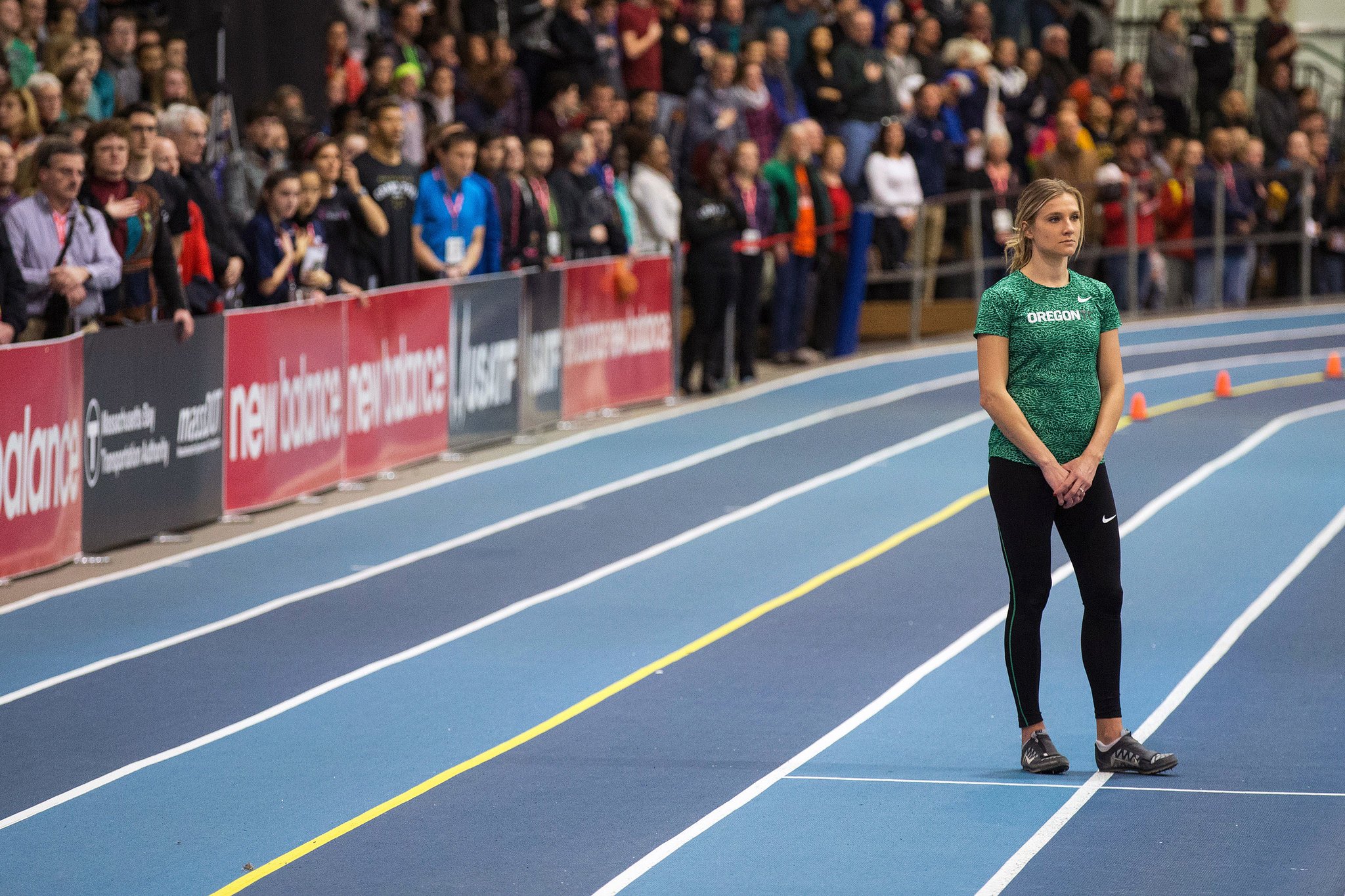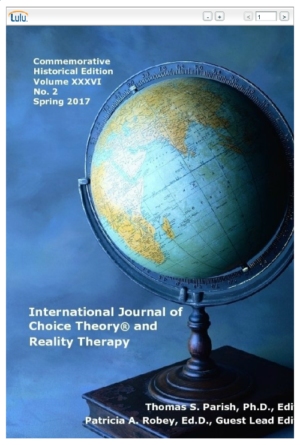
by Lynn Sumida | Relationships
I recently heard an interview with Chris Larson, Assistant Professor of Journalism at the University of Colorado. She spoke about the research she did on Romance Writers and their surprising financial success. Unlike many in media, romance writers are flourishing in an era of digital disruption. Larson looked at their incomes from 2008 to 2014. She found the median income had tripled. She compared that to a study by the Writers’ Guild in the US over the same period, suggesting median income for authors, across all genres, had dropped by 30%.
Chris was intrigued to find out why they were so successful and, contrary to what you might think, the key wasn’t what they were writing about.
A little history sets the stage. Romance writers were not welcomed into the Writer’s Guild with open arms and if you were not published, it was a definite NO. So a group decided to form their own organization and do things a little differently. The rest, as they say, is history. Their enormous success is due primarily to three things they did very deliberately:
- They welcome everyone, published or not. Yeah!
- They shared competitive information (including strategies and money)
- They asked advice from newbies.
There is also strong tradition of mentoring in the “romance” community and they do all sorts of things to support the newbies, including sharing mistakes, new digital strategies, advice and overall transparency. Lastly, the openness to newcomers has led to innovation, with seasoned professionals asking for advice from the new people.
In a nutshell the advice was: band together, share successful practices and look for the newcomers, they likely know more about what’s coming down the pipe.
These ideas and practices I believe are relevant to any organization, board and group that wants to really flourish.

by Susanne Beck | Mental Health and Wellness
There is a woodchuck in my life. He lives close enough so I see him when he emerges from his den to sprawl on his rock in the sun. He’s far enough away, and much too wary of me, to become a pest.
I’ve been observing him off and on for a couple of decades now. I call him Willie.
Yes, I know it’s not the same woodchuck that I first saw twenty years ago. Some years, Willie has the grey muzzle of maturity. Others, he’s a sleek, fresh-faced youngster – that’s Junior. Occasionally, there are offspring, indicating that it wasn’t Willie at all, but Wilhelmina. Sadly, some years, there’s no woodchuck at all.
I get a ridiculous amount of joy from seeing Willie emerge in the spring. I also recognize and am grateful that I can find genuine joy in such small things.
Some people may perceive that the ability to find joy in the trivial is an indicator of unsophisticated tastes. That might be a reasonable perception. I choose not to let it bother me.
In choice theory, Dr. Glasser likens the human satisfaction mechanism to an internal scale, one that looks like the scales of justice. The scale compares your “what you want world” to your “what you perceive that you have world.”
If those two worlds are more or less balanced, then you’re reasonably satisfied and happy.
Glasser refers to the “what you want world” as your personal Quality World. It’s unique to you, filled with pictures of people, things, and values that you associate with positive feelings. Clearly, Willie the woodchuck has a place in mine.
To find joy in what you have is a wonderful gift. However, if you spend much time watching news or listening to some who position themselves as leaders, you may detect an attempt to influence you—to convince you that it is more virtuous to be dissatisfied than satisfied.
We could complete this sentence in a million ways: “We cannot be happy, satisfied or joyful because…” There will always be reasons to be unhappy; valid reasons that affect your life, the lives of people close to you, and the lives of strangers.
Despite all that, there are also reasons and opportunities to find joy.
If I want to find joy, I have options. I can identify what brings me joy, seek it out and bring it into my life. For example, if I were not so fortunate to have Willie, I could seek joy in other ways. No woodchuck? I could go to the shelter, help out, and pet puppies.
Or, I can deliberately choose to look for the joy in what I do have. If I find joy in nature, then even in an urban area, I can choose to see the beauty of the seagulls (or the pigeons) and the emerging greenery of spring.
Do you, too, look for the joy in whatever you have?

by Jean Seville Suffield | Education
In a Glasser Quality School, Total Learning Competence is stressed. Evaluations of work that are below competence (what is now a “B”) is eliminated.
All schooling as defined by Dr. William Glasser has been replaced by useful education.
For example, one school working on the Glasser Quality School Model uses a scoring system consistent with Dr. Glasser’s recommendations, but with considerable enhancement. The in-house progress testing used is:
- Learning in Progress (P) means competence is not yet reached
- Competence (C)
- Advanced (A)
- Mastery (M)
To proceed beyond Competence to Advanced, a student engages in teaching someone else or shows a standard well beyond the learning expectations. Similarly, to achieve Mastery, the student must teach a group of people or show a standard well beyond Advanced.
Cooperation
Students work cooperatively in teams from Pre-K onward. This early practice prepares for collaborative teamwork as students progress through the grade levels.
Senior students perceive collaborative teamwork as a skill required for University and they believe that it is one of the keys to being successful there.

by Jean Seville Suffield | Education
One of the most obvious characteristics of a Glasser Quality School is the special relationship that exists between staff and students as well as between students.
Teachers demonstrate repeatedly how much they enjoy and love being with students.
Students at all levels indicate that they want to come to school.
Evidence of trusting relationships may be found in comments such as:
- Here they care about us;
- The teachers help us learn;
- School is so much fun;
- We have many chances to succeed;
- We love the way learning takes place;
- We have lots of freedom;
- It’s not like other schools where people want to control you;
- It’s not a scary place;
- Other students care about me;
- I love everything.
There is no need for teachers to raise their voices, rebuke students, or appear cross in their presence. Students are orderly and relaxed in the corridors and in classes. There is a reasonable noise level which naturally accompanies certain types of classroom activities. Interactions demonstrate mutual respect: each side listens to the other and students respond to requests for silence immediately and without fuss.
In a Glasser Quality School, relationships are based upon trust and respect. While there may be discipline incidents, all discipline problems have been eliminated.

by Ginette Goguen | Mental Health and Wellness
Would you rather….
- Talk till you’re blue in the face or ask a pivotal question?
- Work harder than the clients you are trying to help or give them information that helps them to help themselves?
- Get frustrated over people’s seemingly ineffective behaviour or develop an understanding and perspective to facilitate effective learning?
You already know which of those choices you’d rather do. You know which is most effective. And if you are in a profession that involves helping others, you also know that making the effective choice can make the difference between loving your job or hating it.
But how can you develop that skill? How do you become more effective yourself, and become more helpful for your clients?
Since 1967, more than 86,000 people have completed Basic Intensive Training in Reality Therapy and Choice Theory. Dr. William Glasser’s work is taught in over 30 countries. Choice Theory will make a difference in your life.
And the learning opportunities, books, and resources that you’ll find on this site can help!

by Susanne Beck | Relationships
Learning how to get along can be hard work. Let’s get some perspective from the dog and cat and perhaps also satisfy our basic need for fun.
If you’re familiar with households that have both a cat and a dog, you know that pets develop their own ways of interacting. The cat may be dominant; the dog may be dominant. (Yeah, right.)
Consider the dog’s point of view. Begging for attention and the mere promise of a cookie, she’s ordered around: come, sit, stay, even roll over. Meanwhile the cat runs the house, with prime food and superior sleeping arrangements. The worst affront—the cat doesn’t even care!
The dog’s perspective is that her life would be better if the cat were different. “If the cat would only change, everything would be perfect.”
Where’s the reality therapy connection? Have you ever heard (or said)…
“If my spouse would only pay attention, everything would be better.”
“If my children would only listen, everything would be better.”
“If my boss would only smarten up, everything would be better.”
Notice any similarity to the dog’s perspective? It’s that enticing sentiment, “If somebody else would change, my life would be better.”
It’s appealing. It may even be true. If somebody else were perfect, perhaps your life would improve! If your spouse lavished you with love and attention, maybe you would have a better marriage. If your children behaved perfectly, maybe you would have a happier household. If your boss became a leader instead of a dictator, maybe work would be better. Lots of things could improve if only others would improve.
So what’s the problem? You already know, don’t you? The reality is: we can only control ourselves. The only behaviour we can change is our own. It would be so convenient if people around us would act the way we know they “should,” but that’s not what we control.
Is there any good news? Yes! We can control ourselves. We can change our own behaviour. And if we are clear about what we want, how we want to live, how we want our relationships to be, then we can choose behaviours that will at least open up the possibility of a more satisfying life.
Next time we are tempted to blame somebody else for our unhappiness and dissatisfaction, remember the dog. Wishing someone else would change is about as futile as the dog wishing that the cat would change.
“If the cat would only change, then everything would be perfect.”
It doesn’t solve anything, but maybe it’ll bring a smile. And a smile might be just enough to remind you to choose a more effective behaviour.
Did you enjoy this post?
You are welcome to visit my blog at www.realitycheck.focusonclarity.com

by Francesco Bazzocchi | Education

As a coach, I often deal with players who doubt themselves. This slowly strips away their self-worth and enjoyment of the game.
Here is how I use Choice Theory to help a hockey player I will call Paul.
Paul has great skills. He performs above average in practice but below expectations in games. Paul can’t articulate why that’s happening, and he is upset about his game performance.
I explore Paul’s Total Behaviour by asking how he prepares for practice:
- What are you doing to prepare?
- What are you thinking before practice?
- What do you feel?
- How would you describe your physiology going into practice?
He tells me…
- He goes through his regular warm up, stretches, prepares his equipment (Doing).
- He loves practice. He’s relaxed and with his friends. (Feeling, Love and Belonging).
- He thinks about scoring and making great plays, (Thinking) He feels good and happy to be part of the team (Feeling).
- He has a lot of energy (Physiology).
In preparing for practice, Paul is in balance and appears to be going in the direction he wants. His ‘total behaviour’ supports his direction. Essentially, Paul is in more effective control.
How about when Paul prepares for games? Here is a different picture:
- He reveals that before a game, he is very nervous (Feeling)
- He thinks about making mistakes or that he is not as good as the other players (Thinking).
- He does not want to disappoint his father or his coaches (Relationship).
- And, “I get a funny feeling in my stomach (Feeling) and I have low energy (Physiology).”
Pre-game, Paul is out of balance and in less effective control. He is spinning his back wheels – stuck in feeling and physiology.
What does Paul want out of his game performance? “To play like I do in practice….With confidence.”
What is the difference between games and practices? “In practice, I feel no pressure.” Paul’s perception of pressure is fear of failure that chokes him up to where he mentally gives up on himself.
Can Paul’s perception of pressure be changed? Yes. He needs to find new behaviours, thinking and acting differently, to give him a chance to compete at his best when it counts.
A simple technique Paul can apply before a game is SOSA. As soon as Paul feels pressure and negative thoughts appear, he can
- Stop the negative thinking. No more ‘awfulizing’. (Thinking).
- Oxygenate, take a few deep breaths (Doing, Physiology).
- Seek information. What self-talk can you tell yourself to get ready? “I am great, I am meant to play in these games.” (Thinking).
- Anchor. Search for an anchor point. Visualize the performance you want, concentrate on the positive outcome; see it unfold before your eyes. (Total Behaviour).
Like Paul, many athletes let their emotions get in the way of their performance. Choice Theory can help them become aware of total behaviour and gain more control of their lives. It is a wonderful way to teach life skills well beyond the sport.

by Glasser Canada | Choice Theory
The following poem has been around since the 1960’s and it really speaks to Dr. Glasser’s work. All of his books and the training levels focus on helping identify the desire to boss and control in order to have our own expectations met by others. But the boy who liked to draw shows us the results of this popular way of being with others.
The second teacher, perhaps, took the Glasser training or read a book and aptly demonstrates the win/win of creating an environment where the boy is not wrong, is able to think and create his own flower. As the poem illustrates, the boy learns much more than how to draw a flower.
The Little Boy
(Helen Buckley, School Arts Magazine, October 1961)
Once a little boy went to school.
He was quite a little boy
And it was quite a big school.
But when the little boy
Found that he could go to his room
By walking right in from the door outside
He was happy;
And the school did not seem
Quite so big anymore.
One morning
When the little boy had been in school awhile,
The teacher said:
“Today we are going to make a picture.”
“Good!” thought the little boy.
He liked to make all kinds;
Lions and tigers,
Chickens and cows,
Trains and boats;
And he took out his box of crayons
And began to draw.
But the teacher said, “Wait!”
“It is not time to begin!”
And she waited until everyone looked ready.
“Now,” said the teacher,
“We are going to make flowers.”
“Good!” thought the little boy,
He liked to make beautiful ones
With his pink and orange and blue crayons.
But the teacher said “Wait!”
“And I will show you how.”
And it was red, with a green stem.
“There,” said the teacher,
“Now you may begin.”
The little boy looked at his teacher’s flower
Then he looked at his own flower.
He liked his flower better than the teacher’s
But he did not say this.
He just turned his paper over,
And made a flower like the teacher’s.
It was red, with a green stem.
On another day
When the little boy had opened
The door from the outside all by himself,
The teacher said:
“Today we are going to make something with clay.”
“Good!” thought the little boy;
He liked clay.
He could make all kinds of things with clay:
Snakes and snowmen,
Elephants and mice,
Cars and trucks
And he began to pull and pinch
His ball of clay.
But the teacher said, “Wait!”
“It is not time to begin!”
And she waited until everyone looked ready.
“Now,” said the teacher,
“We are going to make a dish.”
“Good!” thought the little boy,
He liked to make dishes.
And he began to make some
That were all shapes and sizes.
But the teacher said “Wait!”
“And I will show you how.”
And she showed everyone how to make
One deep dish.
“There,” said the teacher,
“Now you may begin.”
The little boy looked at the teacher’s dish;
Then he looked at his own.
He liked his better than the teacher’s
But he did not say this.
He just rolled his clay into a big ball again
And made a dish like the teacher’s.
It was a deep dish.
And pretty soon
The little boy learned to wait,
And to watch
And to make things just like the teacher.
And pretty soon
He didn’t make things of his own anymore.
Then it happened
That the little boy and his family
Moved to another house,
In another city,
And the little boy
Had to go to another school.
This school was even bigger
Than the other one.
And there was no door from the outside
Into his room.
He had to go up some big steps
And walk down a long hall
To get to his room.
To get to his room.
And the very first day
He was there,
The teacher said:
“Today we are going to make a picture.”
“Good!” thought the little boy.
And he waited for the teacher
To tell what to do.
But the teacher didn’t say anything.
She just walked around the room.
When she came to the little boy
She asked, “Don’t you want to make a picture?”
“Yes,” said the little boy.
“What are we going to make?”
“I don’t know until you make it,” said the teacher.
“How shall I make it?” asked the little boy.
“Why, anyway you like,” said the teacher.
“And any color?” asked the little boy.
“Any color,” said the teacher.
“If everyone made the same picture,
And used the same colors,
How would I know who made what,
And which was which?”
“I don’t know,” said the little boy.
.And he began to make pink and orange and blue flowers.
He liked his new school,
Even if it didn’t have a door
Right in from the outside!
Submitted by Elaine Stoll
The research on fostering imagination and creativity in young children concludes that early control of children with respect to school activities leads to a diminishing of imagination and creativity and also to a diminishing of academic achievement.

by Maureen Craig McIntosh | Coaching, Reality Therapy
In order to help clients with the evaluation of their behavior, Reality Therapy posits a number of procedures designed to help the client do this. There are similar procedures in a Coaching situation.
Procedures that lead to change in a coaching situation:
- Creating the environment/relationship with the clients
- Find out what it is that they want
- Find out what they have done or are doing to get what they want
- Ask if what they have been doing is working and is it taking them in the direction they want to go.
- Ask if they are interested in looking for other options
- Create a plan
Dr. Glasser always said the plan should come from the client.
Here are the six fundamentals of coaching:
- Self-awareness
- Presence
- Listening
- Curiosity
- Effective Questioning
- Intuition
Here is a suggestion to think about. We need to be totally aware of how we present ourselves to our clients. To be most effective, we need to truly listen to what they are telling us. To get curious means to ask questions for clarification.
For example: I just want to grow my business. Explain what growing your business looks like. We continue to effectively question until the client as well as the coach/counselor is clear on what the client really wants. When it comes to intuition, Dr. Glasser always said that some of the best counselling came purely from the “gut”, which I refer to as “intuition.”
What do you think? Was Dr. Glasser the first coach?













